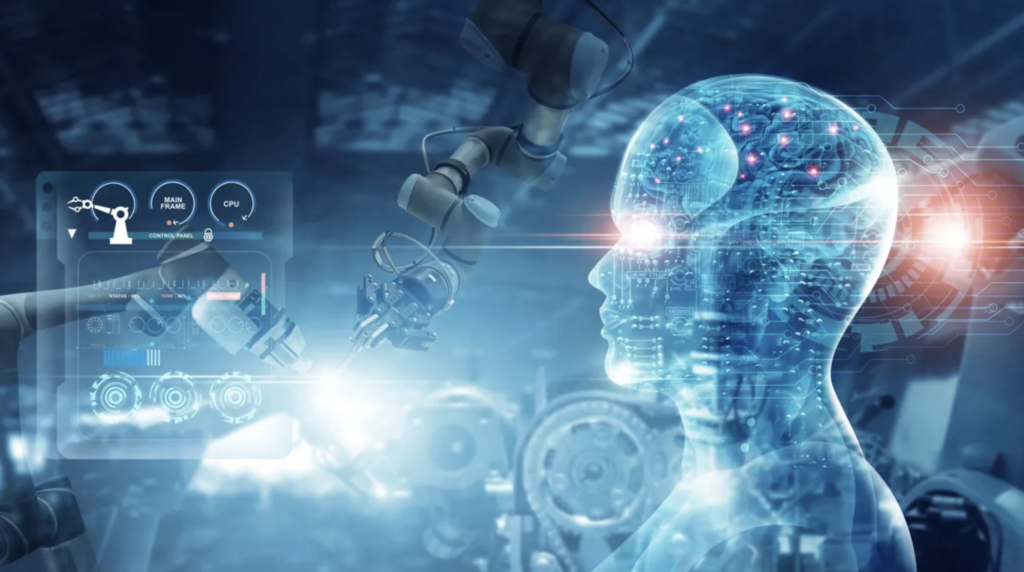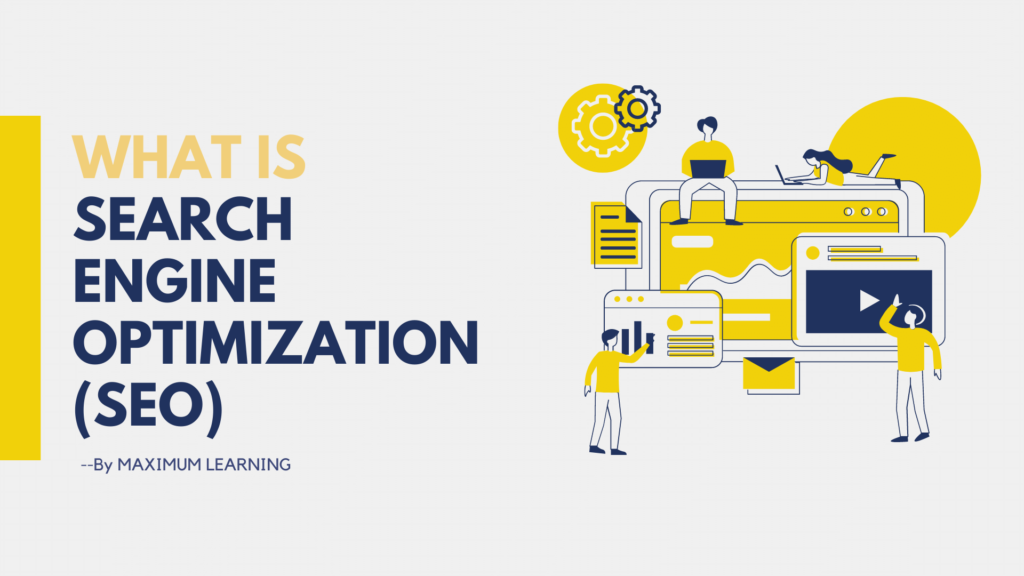What is Artificial Intelligence?
AI stands for “artificial intelligence,” which is the simulation of human intelligence in machines that are programmed to think and act like humans. The term can also be used for any machine that acts like a human mind, such as by learning and solving problems.
The best thing about artificial intelligence is that it can think and act in ways that give it the best chance of reaching a certain goal. Machine learning (ML) is a part of artificial intelligence. It refers to the idea that computer programmes can automatically learn from new data and change without help from humans. Deep learning techniques let computers learn on their own by taking in a lot of unstructured data, like text, images, and videos.
History of Artificial Intelligence
Ancient Greeks had the idea of “a machine that thinks.” But since the invention of electronic computing, and in relation to some of the topics in this article, the following events and milestones have been important in the development of artificial intelligence:
Alan Turing’s book Computing Machinery and Intelligence comes out in 1950. In the paper, Turing, who is famous for breaking the Nazis’ ENIGMA code during WWII, tries to answer the question, “Can machines think?” He proposes the Turing Test to see if a computer can show the same intelligence (or the results of the same intelligence) as a human. Since then, people have talked about the value of the Turing test.
At the first AI conference, held at Dartmouth College in 1956, John McCarthy comes up with the term “artificial intelligence.” (McCarthy would later come up with the language Lisp.) Later that year, Allen Newell, J.C. Shaw, and Herbert Simon make the Logic Theorist, which is the first AI software programme that can run on its own.
In 1967, Frank Rosenblatt builds the Mark 1 Perceptron, the first computer based on a neural network that “learned” through trial and error. Just one year later, Marvin Minsky and Seymour Papert publish a book called Perceptrons. It becomes the most important work on neural networks and, at least for a while, a reason not to do more research on neural networks.
In the 1980s, neural networks that train themselves with a backpropagation algorithm are used a lot in AI.
1997, IBM’s Deep Blue beats Garry Kasparov, who was the world chess champion at the time (and rematch).
2011, IBM Watson beat Ken Jennings and Brad Rutter, who had won the game before.
2015, Baidu’s supercomputer Minwa uses a convolutional neural network, a type of deep neural network, to identify and classify images more accurately than the average person.
2016, Lee Sodol, the world champion Go player, loses a five-game match to DeepMind’s AlphaGo programme, which is powered by a deep neural network. Given that there are so many possible moves as the game goes on (over 14.5 trillion after just four moves! ), the win is a big deal. Later, Google reportedly paid USD 400 million to buy DeepMind.
What are the types of Artificial Intelligence (AI)? Strong AI vs Weak AI
Weak AI, also called Narrow AI or Artificial Narrow Intelligence (ANI), is AI that has been trained to do specific tasks. Most of the AI we use today is based on weak AI. This type of AI might be better described as “narrow” instead of “weak,” since it is anything but. For example, Apple’s Siri, Amazon’s Alexa, IBM Watson, and self-driving cars are all made possible by this type of AI.
Artificial General Intelligence (AGI) and Artificial Super Intelligence make up strong AI (ASI). Artificial general intelligence (AGI) or general AI is a theoretical type of AI in which a machine has the same intelligence as a human. It would have a self-aware consciousness that can solve problems, learn, and plan for the future. Artificial Superintelligence (ASI), which is also called “superintelligence,” would be smarter and more capable than the human brain.
Even though strong AI is still just a theory and doesn’t exist in the real world yet, that doesn’t mean that AI researchers aren’t looking into how to make it happen. In the meantime, the best examples of ASI might come from science fiction, like HAL, the superhuman computer assistant who goes rogue in 2001: A Space Odyssey.
What are the Applications of Artificial Intelligence?
There are a lot of ways to use artificial intelligence. The technology can be used in a lot of different industries and fields. AI is being tested and used in the healthcare industry to help with dosing drugs and giving different treatments based on each patient’s needs. It is also being used to help surgeons do their jobs in the operating room.
Computers that can play chess and cars that can drive themselves are also examples of machines with artificial intelligence. Each of these machines has to think about how what it does will affect the end result before it does it. In chess, the game is over when someone wins. For self-driving cars to work, the computer system must take into account all outside information and figure out how to act to avoid a crash.
AI is also used in the financial industry. For example, it is used to find and flag suspicious banking and finance activities like unusual debit card use and large account deposits, which helps the fraud department of a bank. AI is also being used to help make trading more efficient and easier. This is done by making it easier to figure out the supply, demand, and prices of securities.
It is also used for speech recognition. Speech recognition is also called automatic speech recognition (ASR), computer speech recognition, or speech-to-text. It is a feature that uses natural language processing (NLP) to turn human speech into text. Speech recognition is built into the systems of many mobile devices, like Siri, so that you can search by voice or text more easily.
AI for Customer service. When it comes to customer service, online virtual agents are taking the place of real people. They answer frequently asked questions (FAQs) about things like shipping or give personalised advice, like cross-selling products or suggesting sizes for users.
This changes how we think about customer engagement on websites and social media platforms. Message bots on e-commerce sites with virtual agents, messaging apps like Slack and Facebook Messenger, and tasks that virtual assistants and voice assistants usually do are all examples.
Artificial Intelligence for Computer Vision. It is an AI technology that lets computers and systems figure out what digital images, videos, and other visual inputs mean and then act on that information. It is different from image recognition tasks because it can make suggestions. Computer vision uses convolutional neural networks to help with things like tagging photos on social media, radiology imaging in healthcare, and self-driving cars in the car industry.
Recommendation engines: Using data on how people have used products in the past, AI algorithms can help find data trends that can be used to make cross-selling strategies that work better. This is used by online retailers to suggest relevant add-ons to customers during the checkout process.
Automated stock trading: AI-driven high-frequency trading platforms make thousands or even millions of trades per day without any help from a person. This is done to help optimise stock portfolios.
Benefits of AI
Automation
Artificial Intelligence or AI can automate tasks and workflows, or it can work on its own without a human team. For example, AI can help automate some parts of cybersecurity by watching and analysing network traffic all the time. In the same way, a smart factory might use dozens of different kinds of AI, such as robots that use computer vision to move around the factory floor or inspect products for flaws, create digital twins, or use real-time analytics to measure efficiency and output.
Reduce human mistakes
It can get rid of mistakes made by hand in data processing, analytics, manufacturing assembly, and other tasks by using automation and algorithms that always follow the same steps.
Eliminate repetitive tasks
AI can be used to do tasks that are done over and over again, so people can work on bigger problems. AI can be used to automate tasks like checking documents, transcribing phone calls, and answering simple customer questions like “What time do you close?” Robots are often used to do jobs that are “boring, dirty, or dangerous” that people don’t want to do.
Artificial Intelligence is fast and accurate. It can process more information than a person can do in the same amount of time. It can also find patterns and relationships in data that a person might miss.
Infinite availability
This isn’t limited by the time of day, the need to take breaks, or other things that humans have to deal with. AI and machine learning that runs in the cloud can be “always on” and work on their tasks all the time.
Research and development have been accelerated
When you can quickly analyse a lot of data, it can speed up research and development and help you find answers faster. AI has been used to predict possible new pharmaceutical treatments and to measure the human genome, for example.




